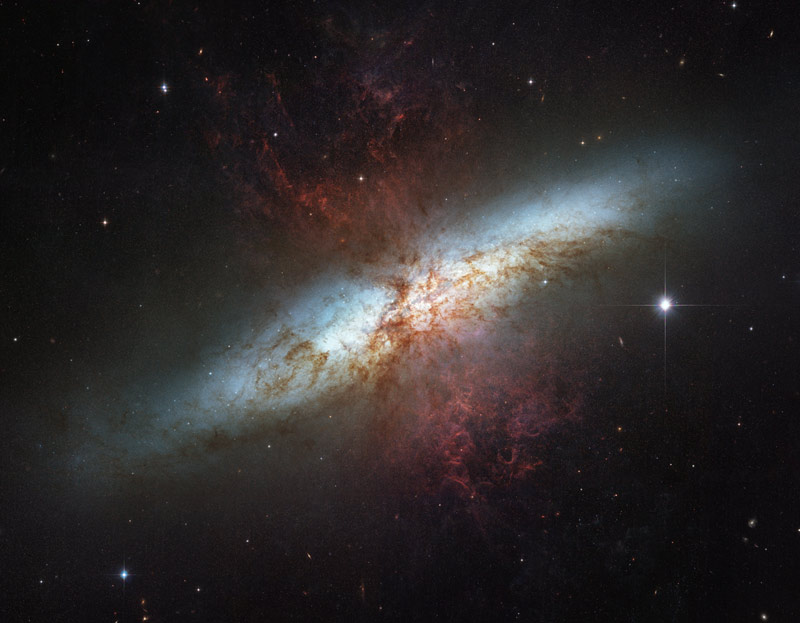Carbon Dioxide Found on New World
By BellatrixIt’s no new thing to find a planet these days since we’ve detected hundreds of extrasolar planets by now. Now being able to determine the chemicals present on other planets, now that’s pretty new and exciting. Now for the first time carbon dioxide has been detected on a planet outside of our solar system.
The planet is called HD 189733b and lies about 63 light years from us. It’s a large planet, about the size of Jupiter with a very short rotation period of only 2.2 days. Astronomers have been observing the planet for a while now using both the Hubble Space Telescope and Spitzer Infrared Space Telescope. Last year they discovered water vapor and then some time later methane. But this is the first time an organic compound such as this has been found on another world. Now this planet is too hot to support life, but chemicals like this one are by products of life processes thus when we are able to start detecting earth sized planets this may be an indirect way of discovering other life forms.
It is exciting not just knowing that these other planets are there but we’re actually able to say something about them. Using the Hubble Near Infrared Camera and Multi-Object Spectrometer (NICMOS) to study the infrared light emitted by the planet. Gases in the planet’s atmosphere absorb certain wavelengths of light from the planet’s hot glowing interior. The astronomers identified not only carbon dioxide, but also carbon monoxide. The molecules leave their own unique spectral fingerprint on the radiation from the planet that reaches Earth. This is the first time a near-infrared emission spectrum has been obtained for an exoplanet. With these detection techniques we can describe the conditions, chemistry, and atmospheric composition of other planets.
This planet was a good candidate for this type of study because of the orientation of the planet to Earth’s orbit. The planet’s orbit is facing us edge on, so when it moves around its star and the star eclipses it. So astronomers are bale to subtract out the light that is due only to the star and thus are left with the spectrum coming from the planet.
Once the new James Webb Space Telescope launches things will get even more exciting. Astronomers will be able to use this technique but with the much greater sensitivity of the new telescope hopefully it will be on terrestrial, or earth like planets. Until then astronomers will be using this technique to look at other exoplanets to see what other new things they can discover.

